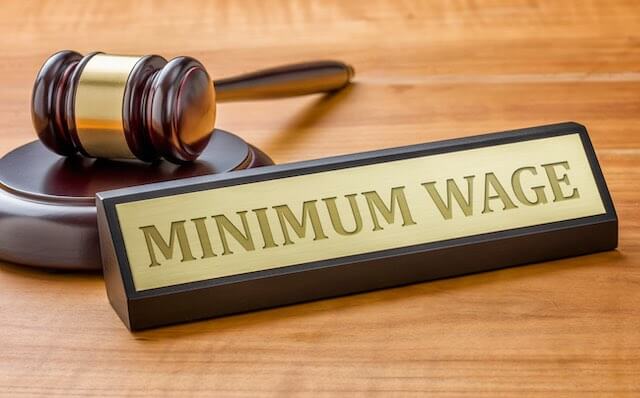Recently, the Office of Personnel Management (OPM) issued guidance to federal agencies entitled Guidance for Implementation of Executive Order 14003 – Protecting the Federal
Workforce.
One section of this guidance addresses the topic of federal employee pay in a very limited way. The document states that the “Director of OPM shall provide a report to the President
with recommendations to promote a $15/hour minimum wage for Federal employees.”
The EO and $15 Minimum Hourly Wage
With regard to this Executive Order requirement, OPM says the agency is now conducting an analysis of what authority OPM has to implement the requirement for a $15 an hour minimum wage for federal employees. OPM will work with senior agency human resources to gather any information necessary to complete this report.
In effect, OPM is now researching options for implementing a $15 minimum wage for all federal employees. No doubt, this is a large undertaking as implied by the statement in the OPM guidance.
With different pay systems in place in federal government, different pay rates in different localities under the General Schedule pay system, and overlapping legislative authority for the different systems, OPM will have to deploy multiple resources to successfully implement President Biden’s desire to have a new minimum wage requirement applied to the federal workforce.
Implementing this requirement appears to require redoing the federal employee pay scales. For example, with regard to the General Schedule pay rates, the minimum pay rate will kick in at different grades and at different steps.
In the Washington, DC locality pay area, a $15 hourly rate starts with a GS-2, Step 4. (A step 3 is at $14.67 per hour). A GS-1, step 7 receives under $15 per hour. But, for employees in many other areas of the country, the pay rates are much different. For example, in the “Rest of the US”, a federal employee at GS-1, Step 7 is a couple of dollars under $15. In the “Rest of the U.S.”, no federal employee at a GS-1 grade makes $15 per hour. The GS-2, Step 9 level, the hourly rate exceeds $15 per hour.
On the other hand, there are very few federal employees at the GS-1 level. Probably some of the employees at OPM are wondering about now how much work this is going to entail to provide a pay increase to a very small number of federal employees. To be more specific, according to OPM data, the number of GS-1 employees in the United States in 2020 was 744. 1,102 federal employees in the United States were classified at the GS-2 level according to OPM data.
In short, if OPM employees were short of work before this new requirement was issued, it will provide work for a number of OPM’ers. The federal pay system is complex. It requires an expert to even understand the various systems. No doubt, most of this small group of experts are high-level employees at OPM or employed at the agency level in other agencies. Coming up with a system to implement this directive that will withstand legal scrutiny (other than just ignoring it instead of the usual litigation that usually often follows an executive decree) will be a challenge for these pay experts and the lawyers.
Does This Mean More Pay for Other Feds?
One of the first questions from readers was along these lines: “Does this new pay raise to a minimum of $15 per hour mean other federal employees will be getting an equivalent pay raise?”
While there is no guidance on this from OPM (so far, at least), the short answer to this question is “no”; this will not impact the pay for higher graded, more highly compensated federal employees. The Executive Order calling for a $15 minimum comes across as a political goal that has been translated into a new requirement outside of the legislative process and will impact a small number of people.
There is little doubt there will be a pay raise for federal employees in January 2022. Any impact of the $15 per hour pay raise, if implemented by that date, will likely be indirect. The typical federal employee annual pay raise will be implemented, as usual, by Congress or by the president under existing legislation.




